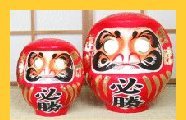Это цитата сообщения SneznyBars Оригинальное сообщение
100 aspects of the Moon (гравюры) 2
|
|
 [показать] [показать] |
21. Itsukushima moon (Itsukushima no tsuki)A courtesan from the port town of Muro on the Seto Inland Sea drifts past the base of a huge torii, or sacred gate, off the shore of the Shinto shrine at Itsukushima island (insert). She is partly hidden behind her oversized traveling hat, and the musical instrument at her feet
21. Луна Itsukushima (Itsukushima никакой tsuki)
|
 [показать] [показать] |
22. Moon and Smoke (Enchu no tsuki)A fireman stands on a building holding the standard for the second district of Edo. He wears a sashiko, a padded coat soaked with water to protect him against the flames. In the lower right is another matoi (standard bearer) from a rival brigade. In 19th century Japan, crowded towns full of houses constructed of wood and paper were extremely vulnerable to fire. The fire-fighting troops were considered exciting and colorful characters, and enjoyed enormous prestige amongst the general population. (printed February 1886)
22. Луна и Дым (Enchu никакой tsuki) |
 [показать] [показать] |
23. Faith in the third-day moon (Shinko no mikazuki)Yamanaka Kikanosuke Yukimori (16th century) was one of the Ten Heroes of the Amako Clan in Isumo Province. Here he is shown in full armor, wearing a Hozoin halberd (print #95), and a helmet with the crescent (or third-day) moon. This is often considered to have been Yukimori's personal choice.
23. Вера на трех-дневной луне (Шинко никакой mikazuki) |
 [показать] [показать] |
24. Moon of the pleasure quarters (Kuruwa no tsuki)A courtesan and her young kamuro (child attendant) watch cherry blossoms fall to the ground at night in the Yoshiwara, the government-licensed Edo prostitution district that was famous for its cherry trees. (printed March 1886)
24. Луна четвертей удовольствия (Kuruwa никакой tsuki) |
 [показать] [показать] |
25. Gravemarker moon (Sotoba no tsuki)Ono no Komachi, a famous beauty and poetess of the 9th century, is seated on a fallen stupa (a gravemarker dedicated to Buddha). This may be the scene from the Noh play Sotoba Komachi (Stupa Komachi) in which two priests ask themselves: "Is this Komachi that once was a bright flower - Komachi the beautiful, whose dark brows linked like young moons - Her face white-farded ever - Whose many, many damask robes filled cedar-scented halls?" Komachi is depicted looking at the moon, and wearing a damask robe that heavily contrasts with her battered straw hat. (printed March 1886)
25. Луна Gravemarker (Sotoba никакой tsuki) |
 [показать] [показать] |
26. Cassia-tree moon (Tsuki no katsura)Wu Gang (Gobetsu in japanese) of the Han Dynasty studied Taoist magical practices, but abused his power. As a punishment, he was forced eternally to cut the cassia trees on the moon. As soon as he cut them, they grew back again. Stevenson* shows a print in which Wu Gang wears a green, rather than a blue tunic. (March 1886.)
26. Луна дерева кассии (Tsuki никакой katsura)
|
 [показать] [показать] |
27. Moon at the Yamaki Mansion (Yamaki yakata no tsuki)Kato Kagekado was a retainer of Minamoto no Yoritomo (1147-1199 AD). In this episode from the Heike monogatari Yoritomo has sent Kagekado to the mansion of Taira no Kanetaka at Yamaki, with the mission to assassinate him. Kagedo tricks Kanetaka into striking at his helmet, and then kills him. (printed March 1886)
27. Луна в Особняке Yamaki (Yamaki yakata никакой tsuki)
|
 [показать] [показать] |
28. Chikubushima moon (Chikubushima no tsuki)In another episode from the Heike monogatari, Taira no Tsunemasa visites the shrine of the goddess Benten on Chikubu Island one evening in the 1180s, and plays the biwa so beautifully that the goddess appears and promises him victory over the Minamoto clan. Unfortunately Tsunemasa himself dies in the battle. (printed March 1886)
28. Луна Chikubushima (Chikubushima никакой tsuki)
|
 [показать] [показать] |
29. The Yugao chapter from “The Tale of Genji” (Genji yugao maki)The ghost of Yugao, one of Prince Genji's conquests, floats above a trailing vine bearing the moonflowers (yugao) after which she is named. Yugao died at the age of 19 during a secretive romantic night with Genji, supposedly cursed by the ghost of a jealous rival. This stunning design was known in Europe, and has no doubt influenced the Art Nouveau movement. (printed March 1886.)
29. Глава Yugao от “Повести о Гэндзи” (Genji yugao maki)
|
 [показать] [показать] |
30. The moon through a crumbling window (Haso no tsuki)Bodhidharma (Daruma in japanese), the founder of Zen Buddhism, was the son of an Indian king. He meditated for nine years before he became enlightened. The years gone by are represented by the crumbling, vine-clad walls. The moon shining trough the cave window is an allusion to enlightenment. Daruma is said to have lost the use of his legs after spending nine years in his cave, and is
30. Луна через рушащееся окно (Haso никакой tsuki)
|
 [показать] [показать] |
31. Mount Ji Ming moon (Keimeizan no tsuki)Zi Fang (Zhang Liang) was a hero of the wars which led to the establishment of the Han dynasty in China in around 200 BC. According to one version of the story, Zhang Liang climbed Mount Ji Ming on the eve of the decisive battle, and played the flute so beautifully that the enemy soldiers became homesick. They fled their camp in large numbers, leaving their commander no other option than to commit suicide. (printed June 1886.)
31. Луна Мунта Чжи Минга (Keimeizan никакой tsuki)
|
 [показать] [показать] |
32. Kitayama moon (Kitayama no tsuki)Toyohara Sumiaki, a musician in the court of Emperor Go-Kashiwabara (reigned 1500-1525), met a pack of wolves as he was walking in the Kitayama moors, north of Kyoto. He charmed them with the sound of his wooden flute and escaped unharmed. (printed June 1886)
32. Луна Kitayama (Kitayama никакой tsuki)
|
 [показать] [показать] |
33. Dawn moon of the Shinto rites (Shinji no zangetsu)The Sanno festival is a traditional event still celebrated on even-numbered years in Tokyo. The print shows a float with a dancer impersonating the Dragon King, preceded by another float with a crowing rooster on a drum, passing Edo castle. (printed June 1886)
33. Луна рассвета Синтоистских обрядов (Шиньи никакой zan-getsu)
|
 [показать] [показать] |
34. The moon’s inner vision (Shinkan no tsuki)Taira no Tomoume, a blind warrior, uses second sight to see his enemies in his clan's war against the Minamoto, and in this, supposedly his death battle. He carries a poem slip as a talisman. The verse reads: “From darkness I have wandered lost on to a darker path - the moon of heart is becoming clouded.” The fallen banner bears the crest of the Mori, who fought on the Minamoto side. (June 1886)
34. Внутреннее видение луны (Shinkan никакой tsuki)
|
 [показать] [показать] |
35. Mount Otowa moon (Otowayama no tsuki)This represents a scene from the Noh play Tamura. Three itinerant priests meet a man sweeping fallen cherry petals as they visit Kiyomizu Temple in Kyoto. He is supposed to have been the spirit of the warrior Sakanoe no Tamuramaro, who assisted the priest Enchin in founding Kiyomizu Temple on Mount Otawa. (printed June 1886)
35. Луна Горы Отоуа (Otowayama никакой tsuki)
|
 [показать] [показать] |
36. Takakura moon (Takakura no tsuki)After having plotted against Taira no Kiyomori in the year 1180, and having been found out, Prince Mochihito - brother of the deposed emperor Takakura - and his companion Munenobu flee from the Takakura mansion disguised in women's traveling costumes. However, the main character of this scene is Hasebe no Nobutsura, Mochihito’s retainer, who has helped them escaping. Nobutsura, was captured, but refused to reveal the prince's whereabouts even under torture. Nobutsura survived, and became Lord of Noto province after the Taira had been defeated in 1185. (printed August 1886)
36. Луна Takakura (Takakura никакой tsuki)
|
 [показать] [показать] |
37. A glimpse of the moon (Kaimami no tsuki)A design that is irreverently known as "Peeping Tom". Ko no Moronao, the chief retainer of the 14th century shogun Ashikaga no Takauji, fell in love with Lady Kaoyo, the wife of a court official, and bribed her maids to arrange for him to glimpse her after her bath. When Kaoyo rejected his advances, Moronao had her husband and his family executed. Moronao is also the villain in the Chushingura, the 18th century play about the Forty-seven Ronin, that was deliberately set back in time in order to avoid censorship. (September 1886)
37. Проблеск луны (Kaimami никакой tsuki)
|
 [показать] [показать] |
38. Ariko weeps as her boat drifts in the moonlightIn the Noh play Ariko no Naishi, the Heian court lady-in-waiting Ariko is despondent over an unrequited love. As she prepares to jump from the boat and drown herself, she recites the following verse: “How hopeless it is - it would be better for me to sink beneath the waves - perhaps then I could see my man from Moon Capital.” The Moon Capital seems to have been imagined poetically either as the moon itself, or as a moon-illumined mountain where the courtiers were "dwellers above the clouds". (printed September 1886)
38. Арико плачет как ее дрейфы лодки в лунном свете
|
 [показать] [показать] |
39. Inamura Promontory moon at daybreak (Inamurgasaki no akebono no tsuki)In 1333 AD, general Nitta no Yoshisada finds the route to the Hojo stronghold in Kamakura blocked by the Inamura cliffs and an enemy fleet of warships. He offers prayers and his treasured sword to the sea gods, and asks them safe passage for his army. The tide recedes considerably, causing a corresponding retreat of the army fleet, and creating a passage way to the vulnerable sea side of Kamakura castle. The castle is taken, and emperor Go-Daigo restored. (printed September 1886)
39. Луна Мыса Inamura на рассвете (Inamurgasaki никакой akebono никакой tsuki)
|
 [показать] [показать] |
40. The Moon of the Milky Way (Ginga no tsuki)According to Chinese legend, the constellations known in the West as Aguila and Lyra represent the lovers Niu Lang (Cowherd) and Zhi Nu (Weaving Girl). They were separated by the Emperor of Heaven and placed at different ends of the Milky Way. They are only allowed to meet on the seventh evening of the seventh month of each year. A celebrating of the lovers’ meeting is the subject of the yearly Tanabata Festival. (printed September 1886)
40. Луна Млечного пути (Ginga никакой tsuki)
|
 [показать] [показать] |
41. Moon over the pine forest of MioThe warrior surveying the scene is Takeda Shingen (1521-1573), warlord and daimyo of the land-locked Kai province that includes Mount Fuji. He eventually conquered a large part of his region, including Suruga province that gave him access to the sea. Takeda sits here looking at Mount Fuji across Suruga Bay. The poem reads: “On the coast at Kiyomi, even the sky bars the way - the moon is blocked by the Mio pine groves.” There is some mystification around his death in 1573. According to one story, it was kept secret for some time in order to confuse the enemy. This is the subject of the film “Kagemusha” (1980) by Akira Kurosawa. (printed in 1886.)
41. Луна по сосновому лесу Mio
|
 [показать] [показать] |
42. Moon of the enemy’s lair (Zokuso no tsuki)O-Usu no miko (Little Prince Usu), aka Yamato-Take no Mikoto, was the physically strong and ruthless third son of emperor Keiko, who reigned from 71-130 AD. The many exploits attributed to O-Usu are described in the Kojiki and Nihonji, major histories compiled in the 8th century. We see him here dressed as a woman and concealing his sword. After his father has sent him to deal with a Kumaso rebellion, he infiltrates in disguise into the rebels' camp, and kills the two brothers who led the rebellion. (probably printed in 1886)
42. Луна логовища врага (Zokuso никакой tsuki)
|
 [показать] [показать] |
43. Theater-district dawn moon (Shibaimachi no akatsuki)It is dawn in the Shibaimachi, Tokyo's theatre district. Staff and guests of the theatres, restaurants and tea houses make their way home. The blackened teeth and shaved eyebrows of the woman in the foreground indicate that she is married. The silhouettes of the kabuki theatre signs are clearly visible against the purple morning sky. As the French painter Toulouse Lautrec is said to have revolutionized the art of making posters by borrowing Japanese woodcut compositional devices, it is quite likely that he knew this design. Others, like Degas, Manet, Gauguin, Van Gogh, and Bonnard, were also inspired by the Japanese masters of the Ukiyo-e. (printed in 1886)
43. Луна рассвета театрального района (Shibaimachi никакой akatsuki)
|
 [показать] [показать] |
44. Akazome Emon viewing the moon from her palace chambersAkazome Emon (956-1041 AD) was a celebrated woman poet at the Heian court. She served in the household of Fujiwara no Michinaga, the prime minister of the day, and father-in-law of several emperors, and she is considered to have been the main author of the Eiga Monogatari, the Fujiwara family history. Here she is portrayed at her doorstep, after a long, sleepless night, awaiting her lover who has failed to show up. Her poem reads: “I wish I had gone to bed immediately - but now the night has passed and I watch the moon descend.” (probably printed in 1887)
44. Akazome Emon рассмотрение луны от ее палат дворца
|
продолжение следует...
 However, the moon shaped maedate (figured plate) may also have been an intrinsic part of the Amako battle helmet, by which these warriors stood out in the field. (printed February 1886)
However, the moon shaped maedate (figured plate) may also have been an intrinsic part of the Amako battle helmet, by which these warriors stood out in the field. (printed February 1886) nowadays best known in Japan as a limbless, usually red-suited, self-righting doll. Daruma dolls are a symbol of optimism, good fortune and strong determination. (June 1886)
nowadays best known in Japan as a limbless, usually red-suited, self-righting doll. Daruma dolls are a symbol of optimism, good fortune and strong determination. (June 1886)